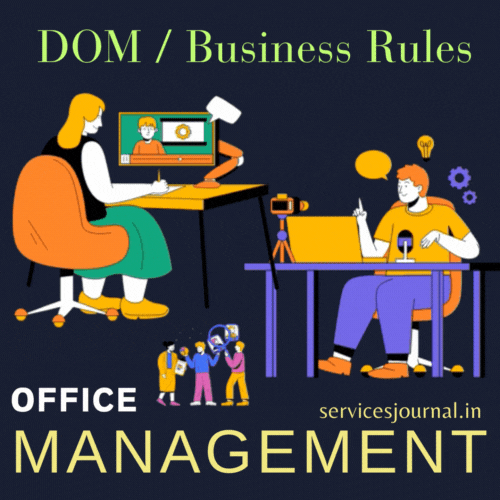I. The questions are categorized
into three levels:
-
Basic Level: For newcomers to EoT; focuses on foundational concepts.
-
Intermediate Level: For those applying EoT principles; emphasizes tools and
processes.
- Advanced Level: For experienced practitioners; deals with strategic application, integration, and leadership in EoT.
II. Basic level questions & answers (1–35): foundational understanding
1. What is the main purpose of
evaluating training?
Answer:
To determine whether the investment in training leads to improved individual and organizational performance. It ensures accountability and supports continuous improvement.
2. Why is evaluation considered the
final stage of the Systematic Approach to Training (SAT)?
Answer:
Because it provides feedback on the effectiveness of earlier stages - Training Needs Analysis (TNA), Design, and Implementation - and justifies resource use through evidence.
3. Who should be concerned with
Evaluation of Training (EoT)?
Answer:
All stakeholders: funding agencies, client organizations, heads of departments, trainers, employees, and beneficiaries.
4. What are the three components of
the EoT course structure?
Answer:
1. Distance
Learning
2.
Workshop
3. EoT Project
5. What does the EoT course
emphasize instead of lectures?
Answer:
It emphasizes active, experiential learning through team exercises, case studies, role plays, and self-assessment.
6. What is "Training"
according to the EoT materials?
Answer:
A planned process to modify attitude, knowledge, or skill behavior through learning experience to achieve effective performance.
7. How is "Investment"
defined in the context of training?
Answer:
An investment is something worth buying because it may be profitable or useful in the future.
8. What is Evaluation of Training
(EoT)?
Answer:
The assessment of the total value of a training system, course, or program - in social as well as financial terms - beyond just meeting objectives.
9. What are the three fundamental
questions that EoT must answer?
Answer:
1. Is the
quality of training satisfactory?
2. Does
training improve performance?
3. Can the organization’s investment be justified?
10. What are some benefits of
systematically evaluating training?
Answer:
Improved alignment with strategy, better training methods, increased credibility, control over costs, higher staff morale, and enhanced service delivery.
11. Why do some organizations avoid
evaluating training?
Answer:
They view it as unnecessary, fear negative results, lack TNA, prefer output metrics, or believe training is an “act of faith.”
12. What is Internal Validation?
Answer:
Checking if trainees achieved the specific behavioral objectives set during training (e.g., via tests, practical assessments).
13. What is External Validation?
Answer:
Assessing whether trained individuals can perform effectively on the job based on real-world performance criteria.
14. How does Evaluation differ from
Validation?
Answer:
Validation checks if objectives were met. Evaluation assesses the overall value of training, including cost-benefit, impact, and stakeholder perspectives.
15. What is
"Contamination" in training evaluation?
Answer:
When factors other than training (e.g., new technology, management style) influence post-training performance, distorting evaluation results.
16. Why is Management Support
crucial for successful EoT?
Answer:
Because managers provide access to performance data, allocate resources, define standards, and act on findings.
17. What is a Learning Log?
Answer:
A personal record where learners document their thoughts, experiences, insights, and reflections during the EoT course.
18. What is the primary purpose of
keeping a Learning Log?
Answer:
To encourage reflection so that new knowledge can be recognized, evaluated, and applied in practice.
19. In which phases should
participants maintain a Learning Log?
Answer:
During Distance Learning, Workshop, and EoT Project phases.
20. What are the suggested contents
of a Learning Log entry?
Answer:
- Learning
event/situation
- What
happened
- What I
learned/concluded
- How I can
use this learning
- Action planned and when
21. What is Behavior Analysis?
Answer:
A method for collecting objective information about verbal contributions made by individuals in group interactions.
22. What are the four major
assumptions behind Behavior Analysis?
Answer:
1. Behavior
matters
2. No
single style fits all situations
3. Behavior
must be observed accurately
4. People can plan and control their own behavior
23. What types of situations can Behavior
Analysis be used in?
Answer:
Team meetings, customer service, telephone sales, selection interviews, appraisals, negotiations, consensus building.
24. What are common Behavior
Analysis categories?
Answer:
Proposing, Giving Information, Supporting, Building, Seeking Information, Summarizing, Disagreeing, Bringing In, Shutting Out, Defending/Attacking, Testing Understanding.
25. What is Formative Assessment?
Answer:
Ongoing feedback given during learning to help trainees improve. It's built into the learning process and non-threatening.
26. What is Summative Assessment?
Answer:
Final evaluation of performance, often resulting in pass/fail decisions (e.g., driving test). Measures outcome, not just learning.
27. What is a Feedback Contract?
Answer:
An agreement among team members to give and receive honest, constructive feedback regularly to support mutual growth.
28. When is feedback most powerful?
Answer:
When someone seeks it, rather than having it imposed. This shows readiness to learn and improves receptivity.
29. What are the key criteria for
giving quality feedback?
Answer:
Be positive, supportive, timely, specific, focus on changeable behaviors, avoid judgmental language, preserve self-esteem, and allow ownership of change.
30. What is SWOT Analysis?
Answer:
A tool to analyze Strengths, Weaknesses, Opportunities, and Threats related to training functions or programs.
31. What does 'S' stand for in SWOT?
Answer:
Strengths - internal positive attributes like skilled trainers, high satisfaction, strong partnerships.
32. What does 'W' stand for in SWOT?
Answer:
Weaknesses - internal limitations such as outdated content, poor transfer systems, low manager involvement.
33. What does 'O' stand for in SWOT?
Answer:
Opportunities - external favorable conditions like policy changes, IT based learning, or government initiatives.
34. What does 'T' stand for in SWOT?
Answer:
Threats - external challenges such as budget cuts, competition, rapid tech changes, or policy shifts.
35. What is Benchmarking?
Answer:
The continuous process of measuring products, services, and practices against top-performing institutions to improve quality and efficiency.
III. Intermediate level questions & answers (36–70): Application of Tools and Concepts
36. What are Easterby-Smith’s four
purposes of evaluation?
Answer:
1. Learning
– improving the learning experience
2. Proving
– demonstrating value for money
3.
Improving – enhancing current/future training
4. Monitoring – tracking training activities over time
37. What is the Hamblin-Kirkpatrick
Model?
Answer:
A hierarchical model with four levels:
1.
Reaction
2.
Learning
3. Job Behavior
4. Organizational Impact
38. Why is relying only on Level 1
(Reaction) insufficient?
Answer:
Because liking a course doesn’t mean learning occurred. Positive reactions don’t guarantee skill acquisition or performance improvement.
39. What is the ‘halo-horns’ effect?
Answer:
When trainees rate everything positively (halo) because they liked the trainer, or negatively (horns) because they disliked them - distorting feedback.
40. What are checklists used for in
EoT?
Answer:
To measure whether specific critical steps or features are present or absent in a task (e.g., “Did the learner plug in the machine?”).
41. What are rating scales used for?
Answer:
To assess the degree or quality of performance (e.g., Poor → Excellent), not just presence/absence.
42. What are the six steps to
construct a valid checklist?
Answer:
1. Specify
process/product
2. List
important characteristics
3. Add
common errors
4. Arrange
logically
5. Provide
response space (Yes/No)
6. Pilot it
43. What are the six steps to
construct a rating scale?
Answer:
1. Define
objective
2. List key
characteristics
3. Define
scale for each
4. Arrange
scales
5. Write
instructions
6. Pilot it
44. What is a product scale?
Answer:
Using actual examples of work (e.g., reports, artwork) to anchor points on a rating scale.
45. What are true/false items best
suited for?
Answer:
Testing factual recall but prone to guessing (50% chance). Best used sparingly and without extreme words like “always” or “never.”
46. What are multiple-choice items?
Answer:
Questions with one correct answer and several distractors. The stem presents a problem, and options include plausible wrong answers.
47. What is a matching item?
Answer:
Presents two columns - premises and responses - for respondents to match. Should contain homogeneous material and unequal numbers to prevent elimination.
48. What is a multiple-response
item?
Answer:
Like multiple-choice, but two or more alternatives are correct. Example: “Select all that apply.”
49. What are the advantages of using
both open and closed questions in a questionnaire?
Answer:
Open questions capture rich qualitative insights. Closed questions produce quantifiable data. Together, they offer balance between depth and reliability.
50. What is the purpose of piloting
a questionnaire?
Answer:
To identify ambiguities, test clarity, estimate completion time, and refine questions before wide distribution.
51. What are the key considerations
for organizing a questionnaire layout?
Answer:
Avoid cramming, group related questions, place closed responses on the right-hand side, and use clear instructions and deadlines.
52. What is Responsibility Mapping?
Answer:
A tool to map roles of stakeholders using codes: R (Responsibility), A (Approval), S (Support), I (Inform).
53. What does 'R' mean in
Responsibility Mapping?
Answer:
Responsibility – accountable for carrying out an action or its outcome.
54. What does 'A' mean in
Responsibility Mapping?
Answer:
Approval – authority to approve or veto an action.
55. What does 'S' mean in
Responsibility Mapping?
Answer:
Support – providing resources (people, funds, coaching) to enable others.
56. What does 'I' mean in
Responsibility Mapping?
Answer:
Inform – needs to know about the action but has no decision-making power.
57. What is Role Analysis?
Answer:
A self-assessment exercise where participants indicate which EoT tasks they personally perform.
58. What are the five functional
areas in the Role Profile?
Answer:
1.
Learning
2. Proving
and Improving
3.
Monitoring
4.
Administration and Management
5. Continuing Professional Development (CPD)
59. What is the purpose of Role
Review?
Answer:
To reflect on one’s role profile and consider improvements, delegation, or expansion of responsibilities.
60. What are Improvement Teams?
Answer:
A structured approach to tackle performance issues through teams of 3–7 people who collect facts, set targets, and implement changes.
61. What are the four stages of the
improvement process?
Answer:
1. Collect
facts on present performance
2. Set a
clear standard to achieve
3. Set
improvement targets
4. Put together an improvement plan
62. What is an Assessment Centre?
Answer:
A structured off-the-job process using simulations and observer-assessors to evaluate managerial competences for selection, promotion, or development.
63. How does an Assignment differ
from a Project?
Answer:
An Assignment is guided and short-term. A Project is open-ended, self-directed, and involves investigation, analysis, and reporting.
64. What is a Case Study in
assessment?
Answer:
A scenario (text, video, role-play) used to assess analytical ability, decision-making, and problem-solving skills.
65. What is an In-tray Simulation?
Answer:
Replicates a manager’s inbox (emails, memos, reports) to assess prioritization, decision-making, and delegation under pressure.
66. What is a Portfolio in
management assessment?
Answer:
A curated collection of work samples (reports, presentations, videos) to demonstrate competence.
67. What is Activity Sampling?
Answer:
Random observation of a trainee’s activities over time to calculate how much time is spent on various tasks.
68. What is the Critical Incidents
Technique?
Answer:
Asking supervisors to describe specific examples of good or bad job performance to identify core competencies.
69. What is Cost-Benefit Analysis
(CBA)?
Answer:
A method to compare the financial cost of training with monetary benefits, helping justify investment.
70. Give an example of a successful
Cost-Benefit Analysis.
Answer:
A retail company reduced defective sales slips by 50% after a ₹105,000
training program, saving ₹660,000 annually - net gain = ₹555,000.
IV. Advanced level questions & answers (71–100): Strategic Integration and Leadership in EoT
71. What is the purpose of the EoT
Project?
Answer:
To conduct a real-world evaluation in a client organization, prepare a report, and demonstrate competence in EoT.
72. What details must be submitted
for the EoT Project proposal?
Answer:
- Name of
participant
- Client
organization
- Issues
likely to be encountered
- How the project will benefit both parties
73. What is the minimum acceptable
score for the EoT Project?
Answer:
74. What is the ultimate goal of
successfully completing the EoT course?
Answer:
To be officially ‘EoT Certificated’ by DoPT, recognizing professional competence in training evaluation.
75. What is Step 1 – “Why Change?”
in the EoT Project?
Answer:
To identify a compelling reason for conducting the evaluation—such as inefficiency, poor outcomes, or lack of stakeholder confidence.
76. What is meant by “Functional
Boundaries” in Step 2?
Answer:
77. What should be included in Step
3 – “Description of Existing System”?
Answer:
Interviews, documentation review, and critical analysis of current evaluation practices, gaps, and usefulness of collected data.
78. What is the purpose of Step 4 –
“Definition of Key Aims”?
Answer:
To clarify the goals of the EoT function and project, aligned with organizational priorities and stakeholder interests.
79. Why is Step 5 – “Definition of
Key Tasks” – important?
Answer:
To select a realistic, measurable, and achievable task instead of vague intentions, increasing chances of implementation.
80. What is Step 6 – “Key
Information Needs”?
Answer:
Identifying what data is required to answer core evaluation questions and from whom it will be obtained.
81. What is the significance of Step
7 – “Diagnosis of Efficiency Needs”?
Answer:
To examine how efficiently resources (time, money, facilities) are being used and propose improvements for better return on investment.
82. Why is Step 8 – “Diagnosis of
Job Satisfaction Needs” – important?
Answer:
To understand emotional resistance to EoT and build buy-in by involving colleagues early and framing evaluation as developmental.
83. What is Step 10 – “Specifying
Efficiency Needs and Objectives”?
Answer:
Setting concrete goals for improving efficiency (e.g., reducing course duration, using distance learning).
84. What is Step 11 – “Develop EoT
System”?
Answer:
85. What is Step 12 – “Detailed
Development”?
Answer:
Planning every aspect of the intervention: roles, timelines, resources, communication strategies.
86. What is Step 13 –
“Implementation”?
Answer:
Carrying out the planned activities, monitoring progress, and making adjustments as needed.
87. What is Step 14 – “Review
Process”?
Answer:
Evaluating the EoT project itself to ensure it was effective, reliable, and replicable.
88. What is the structure of the
Project Assessment Form?
Answer:
Based on 14 steps, it assesses: Context (20 marks), Investigation (35), Tool Selection (20), Action Plan (30), Review (10), Presentation (15), Learning Log (10).
89. What is the weightage for the
Learning Log in the project assessment?
Answer:
10 marks (out of 100%). It assesses depth of reflection and personal development.
90. What are the three criteria for
effective measurement in assessment?
Answer:
91. What is Technical Accuracy in
assessment?
Answer:
92. What is Administrative
Convenience?
Answer:
Ensuring the assessment method is practical and manageable within available time and resources.
93. What makes an assessment method
politically acceptable?
Answer:
If it is perceived as fair, respectful, and not intrusive. Avoid overly frequent or threatening questions.
94. What is the difference between
Normative and Criterion-Referenced Assessment?
Answer:
- Normative: Compares individuals (e.g., top performer)
- Criterion-referenced: Assesses against a fixed standard (e.g., everyone passes if competent)
95. Why is criterion-referenced
assessment preferred in public sector training?
Answer:
Because the goal is universal competence - not ranking individuals. Everyone should meet the required standard.
96. What are the four types of
organizations used for benchmarking?
Answer:
1. Internal
units
2. Direct
competitors
3. Similar
institutions (e.g., ATIs)
4. Different sectors (e.g., private firms, NGOs)
97. What are the three levels of
benchmarking?
Answer:
1.
Strategic – comparing overall training strategies
2. Process
– assessing institutional systems and procedures
3. Operational – analyzing cost, quality, and service delivery
98. What is Deming’s PDCA cycle?
Answer:
99. How can you ensure your EoT
Project is feasible?
Answer:
By focusing on one manageable issue, aligning with your status/influence, and ensuring adequate access to data and stakeholders.
100. What is the ultimate goal of producing
a well-written EoT Report?
Answer:
Summary of Levels
|
Level |
Focus |
Example Topics Covered |
|
Basic |
Foundational knowledge |
Definition of EoT, SAT, validation, feedback |
|
Intermediate |
Practical tools |
Questionnaires, checklists, role analysis,
responsibility mapping |
|
Advanced |
Strategic leadership |
Project
design, benchmarking, cost-benefit analysis, reporting |
These 100 Questions and Answers serve as a complete reference guide for trainers at all levels, enabling progressive mastery of the Evaluation of Training (EoT) framework. They support preparation, reflection, and certification while reinforcing the principles of accountability, continuous improvement, and value for money in public sector training.










